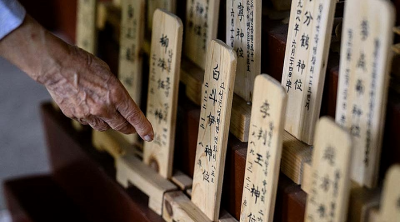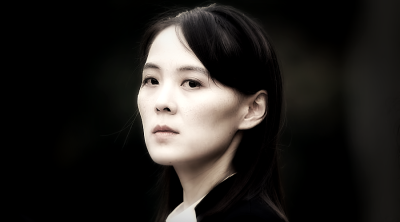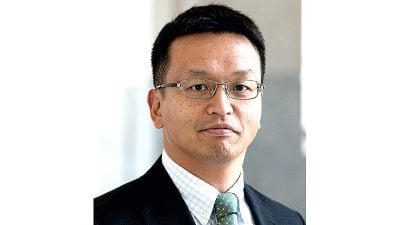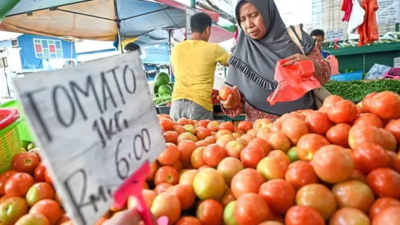
Chairman of the State Affairs Commission Kim Jong-un has achieved complete independence from the previous leaders.
He became the supreme leader of North Korea at the age of 27.
To compensate for his own lack of experience, Kim Jong-un borrowed the power of his grandfather, Kim Il-sung, the founding father and an immensely charismatic man.
There are too many things to list, including hairstyles, clothing, and speech styles.
He also took full advantage of the power of his father, Kim Jong-il.
In December 2011, Kim Jong-un was promoted to supreme commander of the military based on his father’s “dying instructions.”
Following the example of Kim Jong-il, who ruled by adhering to Kim Il-sung’s “dying instructions,” Kim Jong-un also repeatedly appealed for the implementation of “dying instructions” until around 2016.
In the first place, Kim Jong-un’s legitimacy lies in the “Paektu lineage” that links back to his predecessors, and it was explained that Kim Jong-il was chosen as his successor because he was extremely talented.
And as for the third Kim Jong-un, “lineage” was emphasized above all else.
Therefore, it was essential for Kim Jong-un to enshrine his predecessor leaders and to hold up their “dying instructions” in order to consolidate his own position.
However, with the “Songun (military first) ideology” ideas that symbolized the Kim Jong-il era removed from the constitution in April 2019, Kim Jong-un’s intention to become independent from the previous leader became clear.
Kim Jong-un’s policy was so thorough that he rewrote Kim Jong-il’s biography and the official history of the Workers’ Party of Korea (WPK) one after another, and the term “Songun politics” was completely abolished.
It is no exaggeration to say that this was a break with his father.
In October of the same year, Kim Jong-un toured Mount Kumgang, a symbol of North-South Korean economic cooperation, and ordered the removal of hotels and other facilities built by the South Korean side, calling them “shabby and unpleasant-looking.”
Moreover, he lashed out at “the very wrong, dependent policy of the predecessors who were going to rely on others when the country was not strong enough.”
It was Kim Jong-il who planned to obtain a large amount of foreign currency from South Korea through the Mt. Kumgang tourism project.
Although he did not name names, he completely rejected his father’s important policies.
Furthermore, in January 2021, Kim Jong-un changed his position at the WPK from Chairman to General Secretary.
In North Korean society, where Confucian tradition is strong and filial piety is valued, taking away the permanently vacant post of “General Secretary” from his father was a surprising change in direction.
All seven high-ranking executives who stood by the hearse with Kim Jong-un at Kim Jong-il’s funeral have all been removed to date.
It has already been more than 10 years since Jang Song-thaek, who was his closest aide, was executed, and now the personnel affairs are completely in line with Kim Jong-un.
At this point, criticism of Kim Il-sung’s policies has started to become noticeable.
The beginning appeared in economic policy. Kim Il-sung expanded corn fields across the country under the slogan, “The king of the upland field crop is the corn.”
However, the food shortage was not resolved, and the policy instead resulted in the destruction of the soil. While Kim Jong-il continued this policy, Kim Jong-un, who faced the problem directly, began promoting a policy that emphasized wheat.
This may be because Kim Jong-un studied abroad in Switzerland and is used to eating bread himself, but this was a major shift in agricultural policy.
There was also a change in tone in the party newspaper, Rodong Sinmun. For example, an article published in May 2020 referred to “chukjibeop,” the legendary ability of Kim Il-sung and Kim Jong-il to teleport from place to place, stating, “In realistic terms, a person cannot suddenly disappear and reappear by folding space.”
In March 2019, Kim Jong-un himself said, “Mystifying leaders (Supreme Leaders)’ revolutionary activities and appearances would result in covering the truth.”
This statement denies the numerous myths created for the previous leaders.
Finally, a major change was made on the issue of reunification between the North and South, which had been regarded as a top priority.
In a policy speech in January 2024, Kim Jong-un acknowledged that “unification will never be achieved no matter how long it takes.”
He stipulated that “Relations between North and South Korea are no longer those of the same peoples but have become those of two hostile countries or countries in a state of combat.”
This is a complete denial of the “Federal Democratic Republic of Goryeo” plan of “One Nation, One State, Two Systems, and Two Governments” advocated by Kim Il-sung in October 1980.
In honor of Kim Il-sung’s achievements, the huge “Arch of Reunification” built by Kim Jong-il was also removed.
Kim Jong-un used to visit the “Kumsusan Palace of the Sun,” where the bodies of his grandfather and father are permanently interred, every year on his birthday, but he did not visit last year.
The large portrait of the former leaders no longer adorns the front page of Rodong Sinmun.
The time for Kim Jong-un to show off his legitimacy by relying on the prestige of his predecessor has passed.
Kim Jong-un now appears to be running his own course, boldly shifting his policies in step with the changing times.
(Atsuhito Isozaki is Professor at Keio University, Japan.)
ADVERTISEMENT
ADVERTISEMENT








































